The history of text art
Introduction
Text art, more commonly referred to as ASCII art (which is not a very accurate name as not all text art is derived from ASCII), is an art form in which pictures are created out of printable characters.
Despite being heavily associated with computers and Internet culture, there is evidence proving that the art form predates them, appearing in the 1960s. Some sources suggest that it might've been even earlier, coinciding with the creation of the typewriter.
This technique was invented in large part because early printers didn't often have the ability to print images, and so the authors replaced traditional photos with pictures made with characters instead.
Table of contents
(R)TTY and line printers
The Teletype and Radioteletype (they were very similar, one simply used wires and the other radio waves), often shortened to TTY and RTTY, and the line printer were the oldest tools to create text art with.
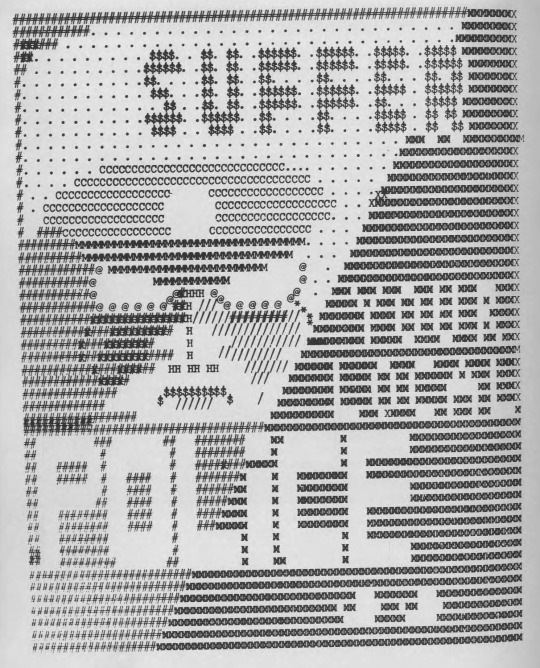
TTY printers used character sets such as Baudot code, predating ASCII. The 1972 RTTY Handbook claims that the TTY has produced text images as early as 1923, although none of these images have been found yet. It's not impossible that teletype artwork was created back then, but unfortunately both traditional fan-fold computer paper and old roll-style teletype paper are not acid-free and as such archival is near impossible as they fade into yellow with time.
Around the same time, in the 1960s, one of the first text images made on an IBM 1403 line printer was published by Andries van Dam. Also on line printers, Kenneth Knowlton was known to create realistic images by overprinting several characters on top of one another.
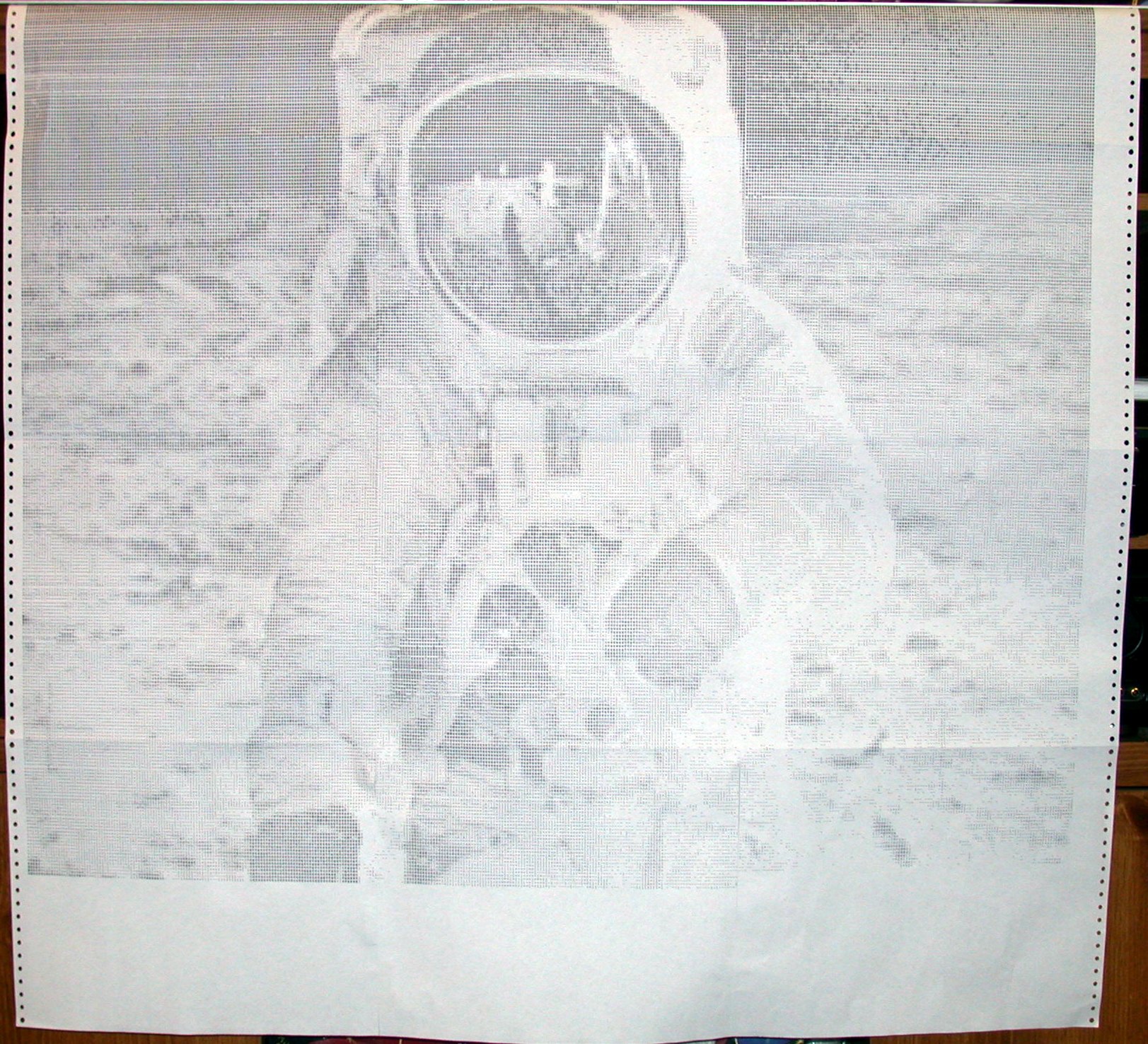
The character sets available in the IBM 1403 were derived from EBCDIC rather than ASCII, despite some similarities.
These works of art weren't always handmade, some were scanned with tools such as the drum-scanning densitometer and later converted to overstrike form.
Preserving these pieces is a complicated process. One such process involves converting overstrike art into Adobe Illustrator files, so the images can load easily on modern computers, be resized, have the font reset and be printed on laser printers.
ASCII
The use of ASCII art can be traced to bulletin board systems of the late 1970s and 1980s, as the computers of the time had limitations that did not allow for images.
Besides being used in communication, ASCII also appeared in underground online art communities, starting a new age of the text art phenomenon.
ASCII art, unlike Unicode, rely on the 95 printable characters defined by the ASCII Standard from 1963. These characters, seen in the image below, can be very limiting for beginners, as modern computers allow for a myriad of characters that don't exist in ASCII.

During the 1990s, there was a decline in ASCII art with the rise in popularity of graphical browsing and variable-width fonts. However, ASCII art was still used in MUDs, IRC, e-mail, message boards... in short, any online communication that employed fixed-width fonts.
As the years progressed, ASCII art became more complex. Some would create ASCII comics, and later colored ASCII art and even animations started being created within this scene.

Braille ASCII and Block Elements
The braille subset of the ASCII uses 64 of the printable ASCII characters to represent all dot combinations in six-dot braille. Originating in North America around 1969, it is used internationally in modern times.
Although less commonly used in ASCII art, it has been used to create images, often accompanied by Block Elements such as █.
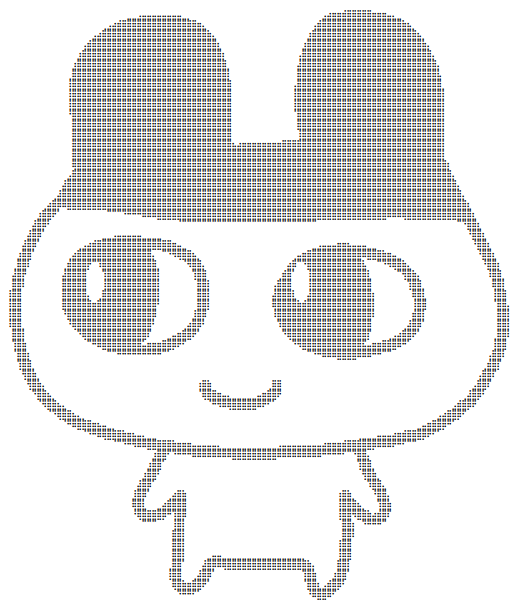
ANSI
ANSI art is a lesser-known form of text art. It was primarily used in bulletin board systems, and had a larger set of characters than ASCII. With 256 characters in total, ANSI art used what is often referred to as extended ASCII, which can be seen below.
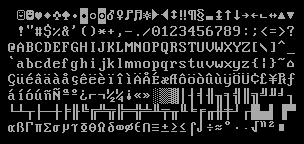
Although far more flexible than ASCII, this artform started declining in numbers in the mid-to-late 1990s. This is due to the rise of the Internet (making BBSes obsolete) and the spread of Microsoft Windows, which did not include the extended ASCII set, as the new dominant OS.
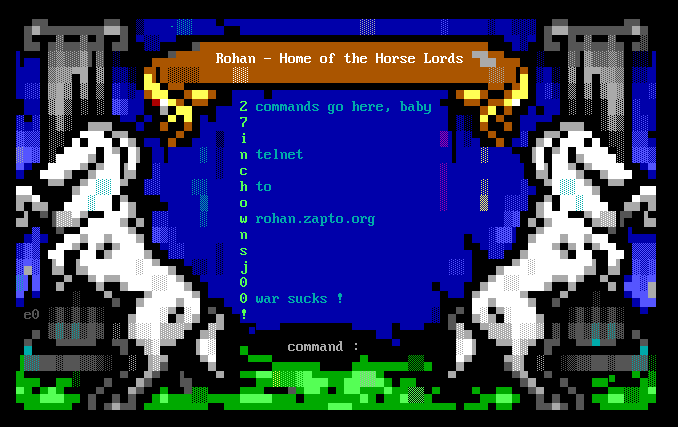
ATASCII
The Atari 400/800 did not follow the ASCII standard, instead using the ATASCII character set.
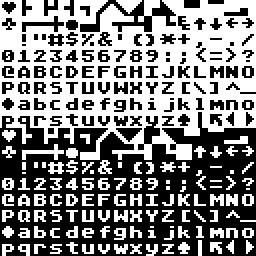
It differs from ASCII as it contains symbol characters, such as the ♥. Some Atari sceners even created ATASCII animations, referred to as «break animations».
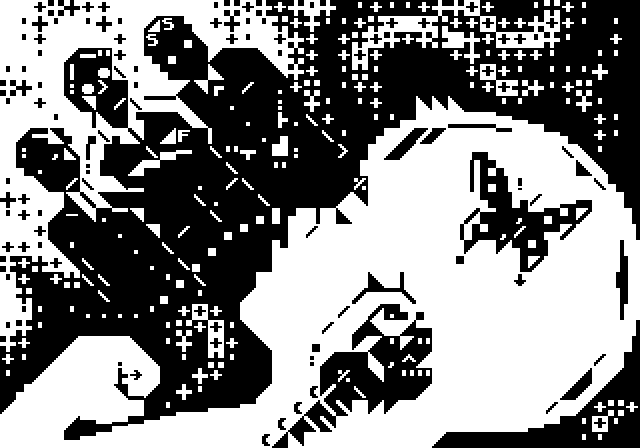
ATASCII, while not a dead artform, is far less common than other types of text art. This might be because it's less accessible than the more common ASCII, Unicode or ShifT JIS, as well as less flexible than ANSI or PETSCII, which allowed for larger color palettes.
PETSCII
The Commodore 64 used PETSCII, a character set similar to ATASCII.
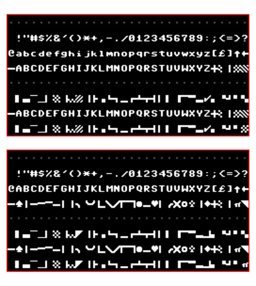
PETSCII art has two main styles: line drawings and text mosaics. The former is a lot simpler-looking, and looks similar to the traditional ASCII art, and text mosaics can picture incredibly complex scenes.
Nowadays, there is a growing community of PETSCII artists due to more programs dedicated to creating this kind of art being created. These new tools allow artists to overlap multiple sprites on the same tile with different colors, allowing for a single tile to have 3 or more colors from the palette- something that was impossible in old hardware, which could only contain 2 colors.
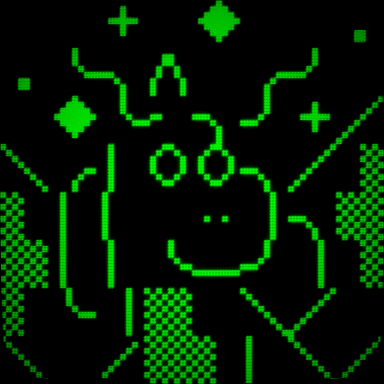
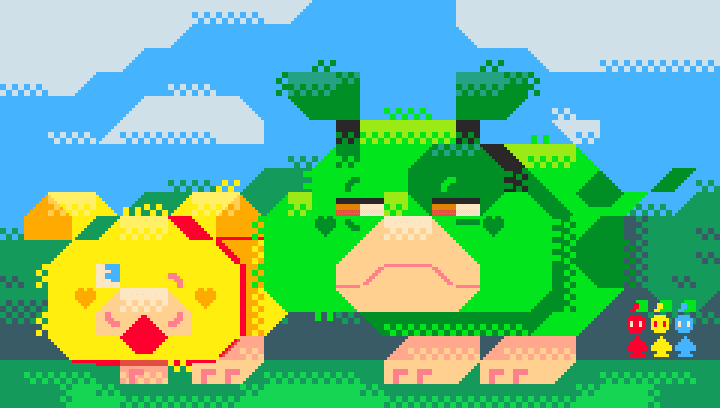
Shift JIS
Shift JIS is a character set that, besides plain ASCII, contain characters from Japanese script and fullwidth ASCII characters. It is usually seen in Japanese websites.
Since the character set contains a larger array of characters, text art using Shift JIS can be a lot more complex than most ASCII art. Artists have a lot more freedom with this set, and since it was easily accessible in Japan it naturally made Shift JIS art very popular in Japanese websites such as 2channel (especially through the 2000s).
In 2channel, a large text art culture formed, creating iconic text art characters such as Gikoneko and Monā. In the late 2010s a newfound appreciation for these characters emerged, especially in the Western side of the Web, years after the end of 2channel.
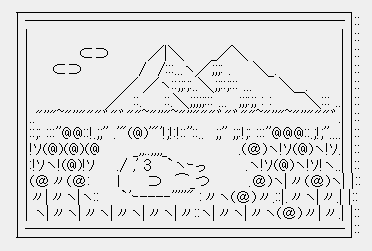
Additionally, this kind of artwork is meant to be viewed with a font such as the MS P Gothic and other proportional Japanese fonts.
Unicode
Unicode is a text encoding standard maintained by the Unicode Consortium. With over 1.1 million characters (including emoji), it is the kind of text art that offers the most freedom.
However, finding a fixed-width font (a staple in text art) is a harder task in Unicode. Not only that, Unicode art cannot be displayed in a .TXT file as it needs an encoding (such as the widely used UTF-8) to process and store as binary data. This is because Unicode is not an actual character set.
Despite these setbacks, Unicode art is widely used for emoticons and kaomoji, as it allows for accurate representations of several different things (such as emotions or animals) with very few characters.
With the rise of emoji, some Unicode artists have incorporated these new characters in their pieces.
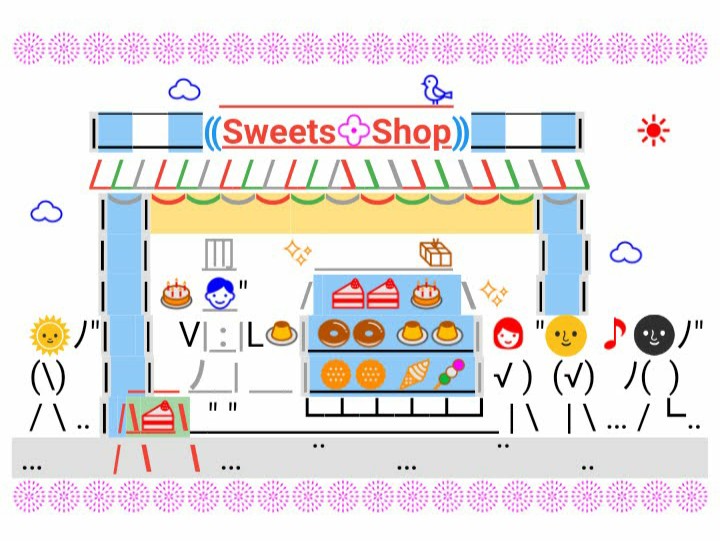
Sources used
-
The History of ASCII (Text) Art, by Joan G. Stark (Internet Archive)
- Ancient Alphabetic Art, by John J. Foust, about the preservation of teletype art
- ASCII Artwork, an interview with Samuel P. Harbison, former line printer artist, by Mike Loewen
- What Is ANSI Art, and Why Was It Popular in the 1990s?, by Benj Edwards for How-To Geek
- PETSCII - A Character Set and a Creative Platform, by Markku Reunanen, Tero Heikkinen and Anders Carlson (PDF)
- Mona Font, author unknown
Further reading
History
- Smiley Lore :-), by Scott E. Fahlman, the creator of the emoticon
- text-mode
- What is textmode?
Generators and tools
Arists and collections
- Adel Faure
- fungi.neocities.org
- Museum of ZZT
- ASCII Art Collection by Lorrie
- ASCII Art Archive
- Christopher Johnson's ASCII Art Collection
- ASCII Art Dictionary
- RTTY Art Viewer
- ASCII Pr0n (NSFW)
- text-mode
- ASCII Art Farts (Internet Archive)
- joan stark's ASCII Art Gallery (Internet Archive)
- ASCII Yume (Tumblr)
- The Elitist Superstructure of DQN (Tumblr)
